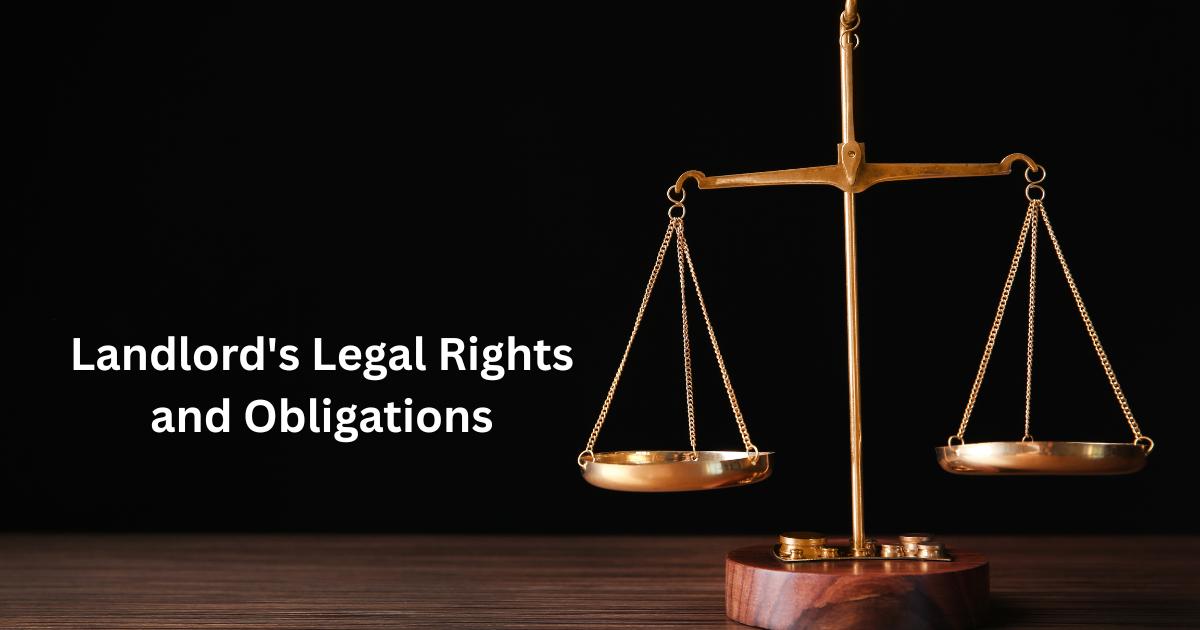· Eviction Laws In India · 8 min read
Eviction Laws in India: A Landlord's Legal Rights and Obligations
Learn about eviction laws in India, including landlords’ legal rights and obligations. Understand the eviction process, tenant rights, and how to handle disputes legally.

The landlord-tenant relationship in India is governed by a complex framework of laws that vary significantly from state to state. Understanding these laws is crucial for landlords to protect their property interests while respecting tenants’ rights. This comprehensive guide examines the legal landscape of eviction in India, outlining a landlord’s rights, responsibilities, and the proper procedures to follow.
Legal Framework Governing Landlord-Tenant Relations
1. State Rent Control Acts
India does not have a unified national law governing rental properties. Instead, each state has its own rent control legislation:
Delhi Rent Control Act, 1958
Maharashtra Rent Control Act, 1999
Tamil Nadu Buildings (Lease and Rent Control) Act, 1960
Karnataka Rent Act, 1999
West Bengal Premises Tenancy Act, 1997
These acts typically regulate rent determination, eviction procedures, landlord and tenant obligations, and property maintenance responsibilities.
2. The Model Tenancy Act, 2021
In June 2021, the Union Cabinet approved the Model Tenancy Act (MTA), which aims to:
Create a balanced legal framework for rental housing
Establish rent authorities and tribunals for dispute resolution
Mandate written agreements and registration
Limit security deposits (maximum of two months’ rent for residential properties)
Specify responsibilities for maintenance and repairs
However, as land and property are state subjects under the Constitution, the MTA serves as a model for states to adopt or adapt. Implementation varies widely, with some states yet to incorporate its provisions into their legislation.
3. Transfer of Property Act, 1882
This central law contains general provisions regarding leases, including:
Definition and essential components of a lease
Rights and liabilities of lessors (landlords) and lessees (tenants)
Procedures for lease termination
Remedies for breach of lease conditions
Legal Grounds for Eviction
State rent control laws generally recognize the following grounds for eviction:
1. Default in Rent Payment
Most rent control acts permit eviction when a tenant defaults on rent payments for a specified period (typically 2-3 consecutive months). However, many acts also allow tenants to remedy the default by paying arrears within a stipulated time frame after receiving notice.
2. Misuse of Premises
Landlords can seek eviction if the tenant:
Uses the property for purposes other than those specified in the lease agreement
Conducts illegal activities on the premises
Causes substantial damage beyond normal wear and tear
Creates a nuisance for neighbors or other occupants
3. Bonafide Personal Need
Most state laws recognize the landlord’s right to recover possession for:
Personal residential use by the landlord or immediate family members
Major repairs or reconstruction that cannot be executed with the tenant in occupation
Redevelopment of the property
However, courts often scrutinize such claims carefully to prevent misuse of this provision, and some states impose restrictions like requiring the landlord to demonstrate no other accommodation is available.
4. Breach of Rental Agreement Terms
Violation of specific terms in the rental agreement can constitute grounds for eviction, including:
Unauthorized subletting
Structural modifications without permission
Violation of usage restrictions
Persistent disruptive behavior
5. Expiry of Lease Period
Fixed-term leases technically end on their expiration date. However, in practice:
Many state rent control acts provide “statutory tenancy” protection even after lease expiry
Mere expiry of lease term may not be sufficient grounds for eviction in controlled premises
For properties exempt from rent control (like those with higher rent values in some states), eviction after lease expiry may be more straightforward
The Legal Eviction Process
1. Eviction Notice
The first formal step is serving a legal notice to the tenant:
Must clearly state the grounds for eviction
Should specify a reasonable time period for the tenant to vacate (typically 15-30 days)
Must be drafted in compliance with relevant state laws
Should reference specific lease violations or relevant legal provisions
Must be properly served to the tenant with proof of delivery
Under Section 106 of the Transfer of Property Act:
For month-to-month tenancies, 15 days’ notice is required
For year-to-year tenancies, 6 months’ notice is required
For leases with specified periods, notice requirements depend on lease terms
2. Filing an Eviction Suit
If the tenant does not comply with the notice, the landlord must file an eviction suit:
Filed in the civil court having territorial jurisdiction over the property
In some states, special rent controllers or rent tribunals have jurisdiction
Required documents typically include:
Copy of the registered lease deed
Proof of ownership (title deeds, property tax receipts)
Evidence of lease violations or grounds for eviction
Copy of the eviction notice with proof of service
Any correspondence related to the dispute
3. Court Proceedings
The eviction suit follows standard civil procedure:
Summons issued to the tenant
Filing of written statements/defenses
Evidence presentation and witness testimony
Legal arguments
Final order/judgment
The timeframe for litigation varies significantly but typically ranges from several months to years, depending on:
Court backlog
Complexity of the case
Procedural delays
Appeals
4. Execution of Eviction Order
If the court rules in favor of the landlord:
A decree for possession is issued
The tenant is given time to vacate (usually 30-90 days)
If the tenant still refuses to vacate, an execution petition must be filed
Court bailiffs or authorized officers can physically evict the tenant and restore possession to the landlord
State-wise Variations in Eviction Laws
Maharashtra
The Maharashtra Rent Control Act applies to premises with rent below certain thresholds
Properties with monthly rent exceeding ₹25,000 in Mumbai and ₹15,000 in other areas are exempt from rent control
Protected tenants (those in rent-controlled premises) enjoy significant rights against eviction
Recent amendments have strengthened landlords’ rights to evict for bonafide personal need
Delhi
The Delhi Rent Control Act provides strong tenant protections
Limited grounds for eviction in controlled premises
Special provisions for eviction from commercial properties
Recent judicial interpretations have somewhat expanded landlords’ recovery rights
Karnataka
Under the Karnataka Rent Act, non-payment of rent for three consecutive months constitutes grounds for eviction
Landlords can recover possession for repairs/reconstruction but must offer re-entry rights to tenants after completion
Special provisions for eviction from commercial properties for bonafide business needs
Tamil Nadu
The Tamil Nadu Buildings (Lease and Rent Control) Act provides for eviction for non-payment after a 15-day grace period following notice
Establishes rent control courts and appellate authorities
Recognizes landlord’s right to increase rent periodically (12% every three years)
West Bengal
The West Bengal Premises Tenancy Act provides relatively more balanced provisions
Recognized grounds for eviction include subletting, nuisance, and structural alteration
Special provisions for recovery of possession for educational institutions and charitable purposes
Legal Obligations and Restrictions for Landlords
1. Prohibition of Self-help Eviction
Landlords cannot:
Forcibly remove tenants
Change locks without court orders
Cut off essential services (water, electricity)
Remove doors/windows or otherwise make the property uninhabitable
Seize tenants’ belongings
Engaging in such activities can result in:
Criminal charges (trespass, criminal intimidation)
Civil liability for damages
Restoration of the tenant to possession
Penalties under specific rent control provisions
2. Maintenance Obligations
Most state laws require landlords to:
Keep structural elements in good repair
Maintain common areas and essential services
Make necessary repairs to keep the premises habitable
Comply with building safety regulations
Failure to meet these obligations can:
Give tenants legal defenses against eviction
Result in rent reduction orders
Lead to government-ordered repairs at the landlord’s expense
3. Rent Increase Restrictions
Many states impose limitations on rent increases:
Maximum percentage increases (often 10-15% every 3-5 years)
Required notice periods before implementation
Standard formulas for calculating permissible increases
Prohibition against arbitrary increases as a means to force eviction
4. Security Deposit Regulations
Landlords must:
Return security deposits within a specified period after tenancy termination (usually 1-3 months)
Provide itemized statements for any deductions
Make only legitimate deductions for actual damages beyond normal wear and tear
The Model Tenancy Act proposes standardizing security deposit amounts to a maximum of two months’ rent for residential properties and six months’ rent for commercial properties.
Recent Legal Developments
1. Digital Rent Control Systems
Several states are implementing digital platforms for:
Rental agreement registration
Rent payment records
Dispute filing and tracking
Property documentation
2. COVID-19 Impact
The pandemic prompted temporary tenant protections in many states:
Moratoriums on evictions for specified periods
Rent payment extensions
Relief from penal interest on delayed payments
Many of these measures have since been phased out but established new precedents
3. Judicial Trends
Recent court judgments have shown:
Greater scrutiny of landlords’ bonafide need claims
Balancing of landlord property rights with tenant protection
Expedited procedures for certain categories of eviction cases
Recognition of changing urban housing dynamics
4. Model Tenancy Act Implementation
As states begin to adopt provisions of the MTA:
Standardized rental agreements are becoming more common
Rent authorities are being established
Fast-track adjudication mechanisms are emerging
Greater transparency in the landlord-tenant relationship is required
Strategic Approaches for Landlords
1. Preventive Measures
To minimize eviction issues, landlords should:
Thorough Tenant Screening
Verify employment and income
Check references from previous landlords
Review credit history where permissible
Document the screening process
Comprehensive Rental Agreements
Clearly specify grounds for termination
Detail maintenance responsibilities
Include permitted uses of the property
Specify procedures for rent increases
Address subletting restrictions
Include dispute resolution mechanisms
Regular Documentation
Maintain rent payment records
Document all communications
Keep records of property condition (before and during tenancy)
Document any tenant complaints and responses
2. Alternative Dispute Resolution
Before pursuing eviction, consider:
Mediation
Less adversarial than litigation
Potentially faster resolution
Lower costs for both parties
Greater flexibility in outcomes
Negotiated Settlements
Payment plans for rent arrears
Voluntary vacation with extended timeframes
Cash-for-keys arrangements
Lease modifications to address issues
3. Legal Representation
When eviction becomes necessary:
Engage lawyers specializing in tenancy matters
Ensure compliance with procedural requirements
Prepare comprehensive documentation
Consider cost versus benefit of litigation
Navigating India’s eviction laws requires understanding both state-specific regulations and broader legal principles governing landlord-tenant relationships. While landlords have legitimate rights to protect their property interests and recover possession under specific circumstances, these rights must be exercised through proper legal channels.
The evolving legal landscape, particularly with the introduction of the Model Tenancy Act, suggests a gradual shift toward more balanced landlord-tenant relations. However, significant state-wise variations persist, making it essential for landlords to familiarize themselves with local laws and procedures.
By combining preventive measures, thorough documentation, and proper legal procedures, landlords can effectively manage their rental properties while minimizing legal complications. When eviction becomes necessary, understanding and following the prescribed legal process is not just a legal obligation but also the most efficient path to recovering possession of the property.



